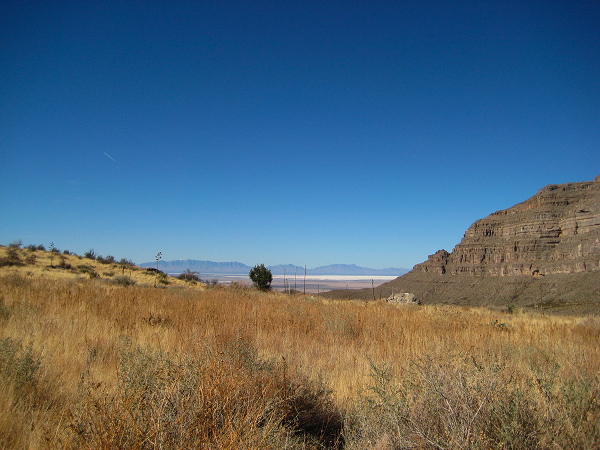Wednesday, February 6, 2008 - Oliver Lee Memorial State Park, Alamogordo, NM
< previous day | archives | next day >

White Sands from the Second Bench, Dog Canyon Trail, Oliver Lee Memorial State Park, Alamogordo, New Mexico, February 2, 2008
A clipping from my collection
Listening
As the poet Gary Snyder said so well, "Beyond all this studying and managing and calculating, there's another level to nature. You can go about learning the names of things and doing inventories of trees, bushes, and flowers. But nature often just flits by and is not easily seen in a hard, clear light. Our actual experience of many birds and wildlife is chancy and quick. Wildlife is known as a call, a cough in the dark, a shadow in the shrubs. You can watch a cougar on a wildlife video for hours, but the real cougar shows herself only once or twice in a lifetime. One must be tuned to hints and nuances." After more than thirty years of living in the foothills of the Sierra Nevada and spending a great deal of that time out-of-doors, Snyder has seen the mountain lion on just a few occasions. One of these sightings was most unusual. Gary had been visiting a neighbor and was walking down from the nearby ridge to his home when he observed a cougar sitting near one of the windows of the house. The animal appeared to be listening intently as one of Snyder's stepdaughters practiced the piano.
Caught in Fading Light: Mountain Lions, Zen Masters, and Wild Nature by Gary Thorp
Night camp
Site 8 - Oliver Lee Memorial State Park, Alamogordo NM
- Verizon cell phone service - good signal
- Verizon EVDO service - very good signal and access speed ( I have to qualify this - during my January 2008 visit the signal and access speed was excellent - in January 2009 it was practically non-existent during the day and slow at night with unpredictable short periods of excellent access)
- Go to Oliver Lee Memorial State Park website
- Go to Oliver Lee Memorial State Park on my Nightcamps map
- Check the weather here
A Good Christion Lion
A missionary was walking in Africa when he heard the ominous padding of a lion behind him. "Oh Lord," prayed the missionary, "grant in Thy goodness that the lion walking behind me is a good Christian lion."
